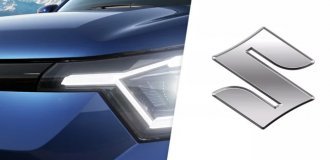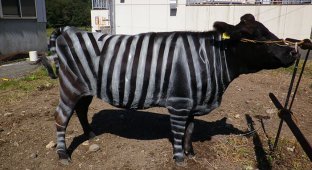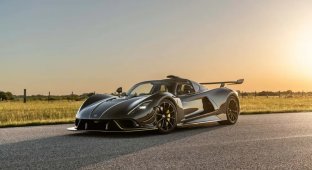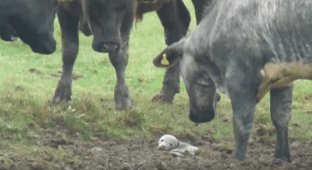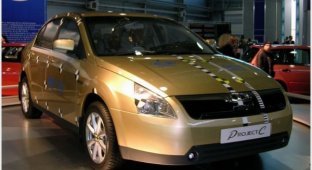Hereford: The jock bull who conquered the world (6 photos)
Almost half of all countries in the world breed Hereford cows. And those who do not breed these purebred cows, raise all sorts of crossbreeds - Herefords are so popular and in demand. 
That same jock who decided to get a fashionable curly hairstyle.
The history of the cows begins in the 18th century, in the British county of the same name, Herefordshire. Of course, there was cattle there before these famous cows, but it was not the same. The country had undergone an agrarian revolution, and the industrial revolution was on the threshold — the old herd of ungulates no longer met the new demands. Not just cows were needed, but highly productive animals, because the intensity of all agricultural sectors had increased sharply. 
By the way, hornless bulls are considered a separate branch of Herefords. They were registered 40 years later than the main breed.
It is surprising that no one specific person was involved in the creation of Herefords. This unique breed was formed spontaneously, thanks to folk selection. Everything was very simple: good, large and hard-working bulls were left for breeding, and small and lazy ones were used for sausages. The English climate was a good help in this matter. Constantly damp, cool weather, frequent winds and rains have hardened local cattle since time immemorial, making them resistant to any weather whims and many diseases. 
We are not fat! We are just on mass!
The first stud book of Herefords was written in 1846. But the breed gained world dominance much later, when active trade between countries and the popularization of purebred breeding began. You always know what to expect from such a herd. And you can expect a lot from Herefords! For one cow of this breed to produce 210 kilograms of pure meat, it takes only 10 months. At the same time, the average daily gain reaches 1.5 - 2 kg. In adulthood, cows gain 700 kilograms, and bulls - more than 1000! This is a lot! It is simply impossible to achieve such results when keeping a herd of ordinary cows. 
It is very easy to understand that you have a Hereford cow in front of you. These animals always have one color: a reddish-brown body and a white head with chest and hooves.
But wait, what about the Limousin, Santa Gertrudis, Shorthorn and the famous Belgian Blues with the double-muscling gene? Yes, indeed, in the world you can find another beef breed of cows with a higher inversion of feed into production. For comparison, Aberdeen Angus need 9 months to achieve the same result, and Limousins and Charolais - only 5. So why does everyone deal with Herefords? What is better about them? 
When you grow up and can get pierced anywhere, because now you are twice as big as your dad.
Usually a farmer has to choose between two evils. Either you bet on the high productivity of a pedigree cow, but treat it for any draft. Or you drive the hardy cattle to free pasture, where it feels great. But you can’t expect much meat from it. Well, with British cows, farmers have no choice. 
So versatile that they are even good for riding!
Herefords adapt not only to dampness, but also to heat, cold, drought and other troubles. Bulls not only "survive in an unfavorable environment," but also successfully gain weight even on the most meager rations. In addition, cows can independently give birth to healthy calves and feed them milk - for large breeds, this is a sore subject, because giant calves often get stuck in the birth canal or die without a cesarean section. And for dessert: Herefords pass on their universal qualities even when crossed with dairy breeds. Isn't that a miracle! This is why farmers in all countries value British cows and will not soon switch to breeding more productive cattle.
